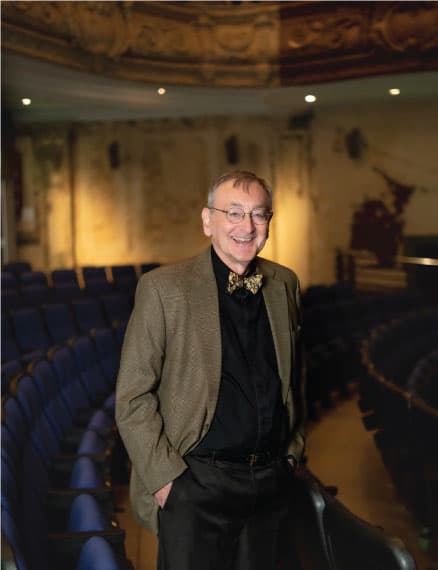Confronting the Paradoxes of Faith in EVERYTHING IS WONDERFUL at CATF
Posted on BroadwayWorld.com July 16, 2017
Most religious communities are closed to some extent. Most religious communities preach benevolence toward fellow-humans. But the more closed a community is, the harder becomes for that community to live up to the benevolence it preaches, particularly towards apostates. Protection of the community boundaries and benevolence towards apostates are almost irreconcilable things. Not only that, but solicitude for community boundaries may lead to too-ready reconciliation with those who have violated its standards but stayed within those boundaries.
In Everything Is Wonderful, featured in this year’s Contemporary American Theater Festival in Shepherdstown, WV, playwright Chelsea Marcantel has dramatized these paradoxes in the context of an Amish community. On the evidence of the play, the Amish are generally peaceful and forgiving; indeed, we are introduced at the outset to Eric (Jason Babinsky), a young outsider who through negligence has done a terrible wrong to the community, and comes seeking forgiveness and healing, and receives plenty of both.
The treatment we witness Eric receiving will provide a striking counterpart or counterpoint, as the case may be, to the community’s treatment of two other young violators of its standards, Miri (Jessica Savage) and Abram (Lucky Gretzinger). The difference in the treatment they receive is partly owing to the nature of Miri’s and Abram’s respective transgressions, but also depends upon how they relate to the community’s boundaries.
Miri’s transgression is the same as her status; she has become apostate, and, having left the community, she has been excommunicated, so that she cannot sit at her family’s dinner table or sleep under its roof or touch them, a penalty which is as keenly felt by her family as by her. Yet, as we eventually learn, she left only when those community boundaries failed to provide her meaningful protection or support in the light of a wrong done to her. Abram’s failing is not revealed at once, but he has always stayed within the group, and has in consequence received the community’s absolution in a way that seems far too easy.
In short, we are witnessing a situation where community sanctions, perhaps rational in the abstract, lead to irrationally unequal consequences that are also out of step with community ideals. Dramatically, this conflict cries out for someone to defend the community, to justify its ways. Yet for better or for worse, the community, the antagonist which has created this ethical mess, is not directly represented. Instead, there are only the three members of Miri’s estranged family: sister Ruth (Lexi Lapp), mother Esther (Hollis McCarthy), and father Jacob (Paul DeBoy). When we see the community meting out its inequitable justice, we see it happening only through them, and they too are victimized by it. They do what they do simply because it is what is laid down in the Ordnung, the group’s unwritten rules. It is a code as unequal to the tests presented to it as is the code of military justice which forces Captain Vere to hang a virtuous young man in Billy Budd. And the Ordnung is just as unapproachable and unchangeable in its abstractness as that code.
The story here is, thank goodness, not Billy Budd; the conclusion will not prove quite so bleak. However, that statement must be followed immediately by the acknowledgment that it is not easy to figure out what happens in the conclusion. I spoke with a number of members of the audience about it, and none of us could work it out. The script makes the obscurity a little clearer, but there seem to be limits. Throughout the play, there have been shifts back and forth between the present and the past, and part of the key to the end is that at that point present and past occupy the stage together. Things happen in that space that probably could not literally happen anywhere in the “real” fictional timeline. Those things create the feeling of resolution, but perhaps without the play having fully earned it.
Clearly, what the characters need is an overthrowing of the Ordnung, or at least the insertion of some exceptions to it, so that they can effectively forgive each other. Nothing short of that will earn the feeling that the ending strives for. And it does not seem as if that has actually occurred in the world of the play, notwithstanding a sort of transfiguration of the entire ensemble in the show’s final moments.
In reacting to the play as a whole, therefore, we need to take a step back from the conclusion. And fortunately we can. We do not need the last few minutes, or at least not this version of them. If the resolution enacted before us is wanting, the sketching out of the problem is beautifully done. We have been brought to the point where we can see clearly how religion has let its adherents down, and how the way past that disappointment lies in human connection, moral accountability, and forgiveness. Whether these particular characters achieve it is not that important.
The play may be set in an Amish world, but dramas with many similarities could be set in Catholic or Jewish or Muslim worlds, and probably among most other faiths. I do not read Marcantel as indicting religion as such; she shows us how much groundedness and understanding faith gives, and not just what faith frequently takes away. Every faith needs, and has, its own Ordnung, but in order to live fully and well, Marcantel seems to be saying, believers will always need to transcend it. And then, as the play hints, believers will also need to return to it. Every faith journey will thus be a work in progress, forever.
In keeping with the universality of this message, the action is played out in front of a sky-like scrim (see the picture above) that seems to locate the action as much in the midst of eternity as in Amish country. The costumes (by Therese Bruck) carry the burden of specificity. There is a pleasing contrast between the bright colors but simple lines of the women’s garb and those of the “English” characters, Eric and, at times, Miri. It may be a world we do not know but one most of us will find intriguing, and which, for a couple of hours, we are allowed to navigate imaginatively.
The performances, of course, are superb. I particularly appreciated DeBoy’s rendering of the father, conflicted but steadfast, and Savage’s Miri, steadfast in her own way, acknowledging the difficulty of her demand upon her family and her faith, but not backing down when it seems to be rejected. I did have a problem with Babinsky’s reactions; his character is partly written to provide comic relief, but at times it felt as if he was breaking character to laugh at his own lines, sitcom-style. But that, one assumes, was a directorial choice. And Hollis McCarthy did much to convey the mother’s heartbroken restiveness.
If I did not entirely approve of the way the play was constructed, and obviously particularly the ending, I think most viewers would agree with me that it was nevertheless thought-provoking, often beautiful and in a quiet way inspiring. Like every other play in this year’s Festival, it should not be missed.
Copyright (c) Jack L. B. Gohn, except for production photo. Photo credit: Seth Freeman.


 I lived in London and Vienna before coming to the United States, and grew up mainly in Ann Arbor. I was writing plays and stories as early as grade school. My undergraduate years at the University of Pennsylvania, where I first reviewed theater, for the college paper, were succeeded by graduate study at the Johns Hopkins University, where I earned a doctorate in English Literature.
I lived in London and Vienna before coming to the United States, and grew up mainly in Ann Arbor. I was writing plays and stories as early as grade school. My undergraduate years at the University of Pennsylvania, where I first reviewed theater, for the college paper, were succeeded by graduate study at the Johns Hopkins University, where I earned a doctorate in English Literature.